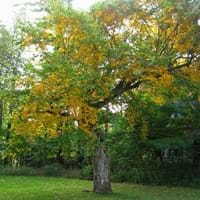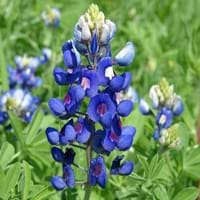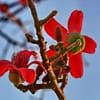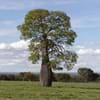Life Span
Perennial
Perennial
Type
Tree
Flowering Plants
Origin
Northeastern United States, Mid-Atlantic United States, North-Central United States, Central United States, Canada
Mediterranean, North Africa, Northern America
Types
it is a type of birch
Anthony Peak Lupine, Silver Bush, Garden Lupine, Spider Lupine, Adonis Lupine
Number of Varieties
Not Available
Habitat
Hillside, Mountain tops
Pine barrens, Sandy areas
USDA Hardiness Zone
4-7
3-7
Sunset Zone
A3, 1a, 1b, 2a, 2b, 3a, 3b, 4, 5, 6, 7, 14, 15, 16
1a, 1b, 2a, 2b, 3a, 3b, 4, 5, 6, 7, 14, 15, 16, 17
Habit
Pyramidal
Upright/Erect
Flower Color
Light Yellow, Light Green
Blue, Pink, White
Flower Color Modifier
Bicolor
Not Available
Fruit Color
Bronze, Sandy Brown
Not Available
Leaf Color in Spring
Green, Dark Green
Light Green
Leaf Color in Summer
Dark Green
Green
Leaf Color in Fall
Yellow
Green
Leaf Color in Winter
Not Available
Not Available
Plant Season
Spring, Summer, Fall, Winter
Summer
Sunlight
Full Sun, Partial Sun
Full Sun, Part sun
Type of Soil
Clay, Loam
Loose, Moist
The pH of Soil
Acidic, Neutral
Slightly Acidic
Soil Drainage
Average
Well drained
Bloom Time
Early Spring
Late Spring, Summer
Tolerances
Not Available
Not Available
Where to Plant?
Ground
Ground
How to Plant?
Seedlings
Seedlings
Plant Maintenance
Medium
Medium
Watering Requirements
Average Water Needs, Do Not over Water
Form a Soil ring to water efficiently, Keep the ground moist but not water-logged, Requires a lot of watering, Water in morning to avoid prompting diseases
In Summer
Lots of watering
Lots of watering
In Spring
Moderate
Moderate
In Winter
Average Water
Average Water
Soil pH
Acidic, Neutral
Slightly Acidic
Soil Type
Clay, Loam
Loose, Moist
Soil Drainage Capacity
Average
Well drained
Sun Exposure
Full Sun, Partial Sun
Full Sun, Part sun
Pruning
Prune to half of its height
Prune ocassionally
Fertilizers
All-Purpose Liquid Fertilizer, fertilize twice a year
All-Purpose Liquid Fertilizer
Pests and Diseases
Borers, Chlorosis
Aphids, Fusarium wilt, Root rot, Thripes
Plant Tolerance
Not Available
Drought
Flowers
Insignificant
Yes
Flower Petal Number
Not Available
Single
Fragrant Bark/Stem
Yes
No
Foliage Texture
Medium
Medium
Foliage Sheen
Matte
Matte
Attracts
Not Available
Bees
Allergy
Respiratory problems, Skin rash
Abdominal pain, Asthma, Nausea, Swelling in the face, Vomiting
Aesthetic Uses
Landscape Designing, Showy Purposes
Showy Purposes
Beauty Benefits
Not Available
Not Available
Environmental Uses
Air purification, Shelter for wildlife
Air purification
Medicinal Uses
No Medicinal Use
Anthelmintic, Diuretic, Treatment of ulcers
Part of Plant Used
Bark, Sap
Flowers, Seeds
Other Uses
Edible syrup, used for making charcoal, Used for making wood alcohol, Used in Furniture
Showy Purposes, Used as Ornamental plant, Used for fragrance
Used As Indoor Plant
No
No
Used As Outdoor Plant
Yes
Yes
Garden Design
Feature Plant, Shade Trees
Bedding Plant, Container, Feature Plant, Foundation, Rock Garden
Botanical Name
BETULA alleghaniensis
Lupinus
Common Name
Yellow Birch
Hybrid Lupine
In Hindi
Yellow Birch
वृक संयंत्र
In German
Yellow Birch
lupine
In French
bouleau jaune
usine de lupin
In Spanish
Abedul amarillo
planta de lupino
In Greek
κίτρινο Birch
φυτό λούπινο
In Portuguese
κίτρινο Birch
tremoço planta
In Polish
żółte brzozy
łubin roślin
In Latin
Birch flavum
Plinio herba
Phylum
Magnoliophyta
Magnoliophyta
Class
Magnoliopsida
Magnoliopsida
Family
Betulaceae
Fabaceae
Clade
Not Available
Not Available
Tribe
Not Available
Not Available
Subfamily
Not Available
Faboideae
Number of Species
Not Available
Importance of Yellow Birch and Lupine
Want to have the most appropriate plant for your garden? You might want to know the importance of Yellow Birch and Lupine. Basically, these two plants vary in many aspects. Compare Yellow Birch and Lupine as they differ in many characteristics such as their life, care, benefits, facts, etc. Every gardener must at least have the slightest clue about the plants he wants to plant in his garden. Compare their benefits, which differ in many ways like facts and uses. The medicinal use of Yellow Birch is No Medicinal Use whereas of Lupine is Anthelmintic, Diuretic and Treatment of ulcers. Yellow Birch has beauty benefits as follows: Not Available while Lupine has beauty benefits as follows: Not Available.
Compare Facts of Yellow Birch vs Lupine
How to choose the best garden plant for your garden depending upon its facts? Here garden plant comparison will help you to solve this query. Compare the facts of Yellow Birch vs Lupine and know which one to choose. As garden plants have benefits and other uses, allergy is also a major drawback of plants for some people. Allergic reactions of Yellow Birch are Respiratory problems and Skin rash whereas of Lupine have Abdominal pain, Asthma, Nausea, Swelling in the face and Vomiting respectively. Having a fruit bearing plant in your garden can be a plus point of your garden. Yellow Birch has no showy fruits and Lupine has no showy fruits. Also Yellow Birch is not flowering and Lupine is flowering. You can compare Yellow Birch and Lupine facts and facts of other plants too.





